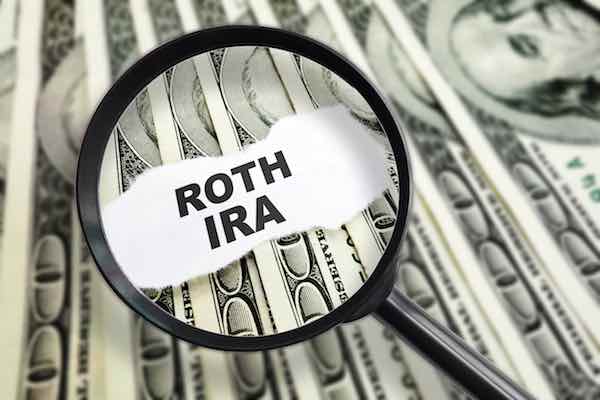A backdoor Roth IRA (Individual Retirement Account) is a conversion method used by people that are not eligible to contribute to a Roth IRA.
Roth IRA
Most people are familiar with a Roth IRA. When you fund a Roth IRA, you are taking money out of your bank account that has already been taxed and placing it into this new IRA. The advantage it offers over a traditional IRA is that the growth on the contributions accumulates tax-free, meaning you won’t pay taxes on the money again when you take it out at retirement age.
The annual contribution limit for a Roth IRA is $5,500 ($6,500 if 50 or over) but in order to do that, you need to have income below a certain threshold. For 2017, it begins phasing out at $118,000 for singles; for a couple, the threshold is $186,000 which means if you are making more than these limits, Congress says you aren’t allowed to put money in to a Roth IRA.
“Backdoor” Roth
The backdoor is a strategy for people that are over these thresholds. If you make too much money to contribute to a Roth IRA, there is a rule that says you can contribute money to what is called a non-deductible IRA. It’s a type of IRA where you don’t get a tax deduction, however, there are no income limits for contributing to this type of IRA.
There is also a rule that says that you can convert that non-deductible IRA to a Roth IRA almost immediately. Unlike the standard Roth IRA, there are no income limits for this conversion, hence why it’s called a “backdoor.” You aren’t putting the money directly into the Roth, but you are placing the money into the non-deductible IRA and then moving it to the Roth. You have already paid taxes on the non-deductible IRA funds, so the only taxes due are any gains you have accrued in the IRA. Since most convert their non-deductible IRA to a Roth immediately, there would be no gains and no tax due.
What holds up many people is that they may have other IRA accounts. There is another rule within the Internal Revenue Code that refers to a pro rata issue. If you have money in other IRA accounts, any money you moved over to the Roth has to be proportionally taken from all your IRA accounts. Frequently many people have money in other IRA accounts already, so when they are attempting to move this new account money, they can only move a small portion of it because they have to move an equal proportion of the other accounts which can trigger massive tax liabilities which is not in their best interest.
Consequently, the backdoor Roth IRA is only valid for a very small group of people: those with high incomes (ineligible for a Roth IRA), and those with no other existing IRA accounts which is an uncommon occurrence. Please consult with a financial professional if you have any uncertainties or questions related to your specific situation.
The opinions voiced in this article are for general information only and are not intended to provide specific advice or recommendations for any individual. Carefully consider your investment objectives, risk factors before investing. Investing involves risk, including the possible loss of principal. Diversification and asset allocation may not protect against market risk. Nothing in this article is intended as legal or tax advice. Please consult with your independent legal or tax advisor to seek advice based on your particular circumstances. For a list of states in which I am registered to do business, please visit www.adviserinfo.sec.gov and search for my name.



